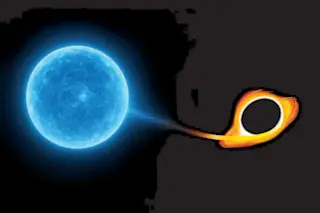Most galaxies reside in dense swarms of up to a thousand, zooming around at some 600 miles a second. Astronomers first noticed some years ago that nearby galaxy clusters are populated with dim reddish elliptical galaxies. But the most distant and therefore oldest clusters are full of bright blue spirals, some of which are slightly irregular. The observations suggest that galaxies in clusters evolve from spirals to ellipticals over the course of about 5 billion years. Theorists have proposed various mechanisms to explain this--including collisions of galaxies--but none fully jibe with the data, says University of Washington astronomer George Lake.
Lake believes he and some colleagues may have solved the puzzle. They used a supercomputer to simulate the effect that living in a giant cluster of galaxies has on the shape and color of its members. Their computer model tracks a typical spiral galaxy as it orbits through a cluster ...














